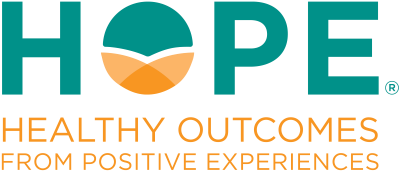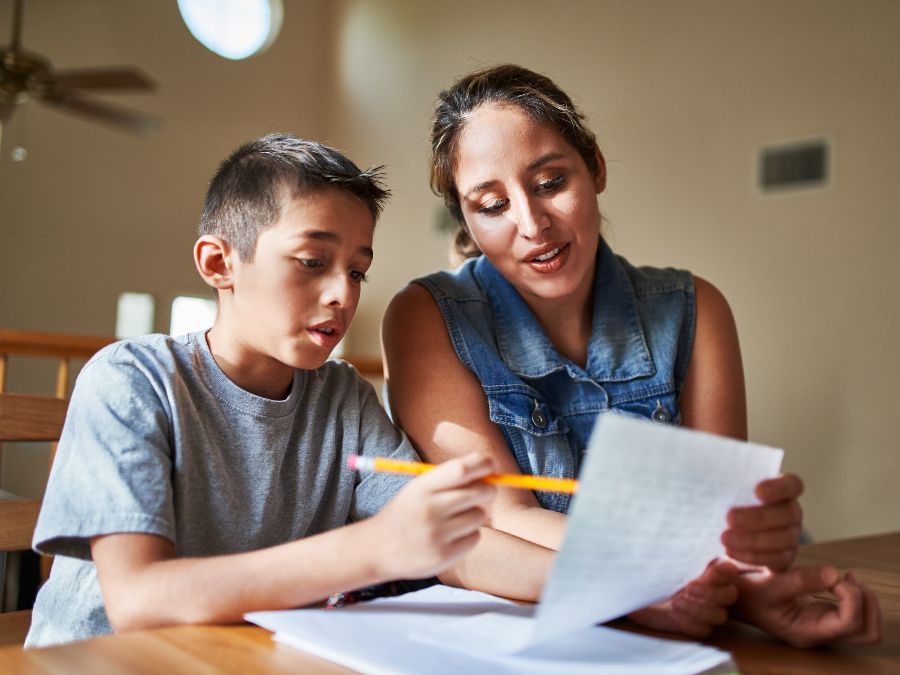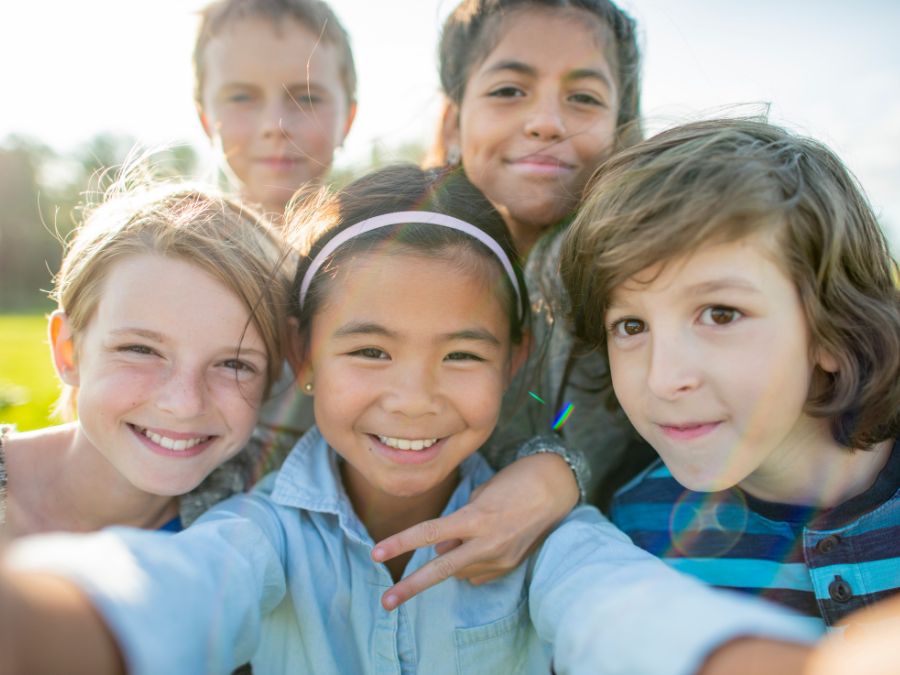
What research tells us about positive childhood experiences
First study in Wisconsin: Linking PCEs to better mental health
All of children’s experiences, both positive and negative, matter. Decades of research on Adverse Childhood Experiences (ACEs), including Vincent J. Felitti, MD’s seminal 1998 study, links ACEs to increased risks of health behaviors and diseases, including alcoholism, depression, heart disease, and even death.
What about positive childhood experiences (PCEs)? How do PCEs affect adult mental health? How do PCEs interact with ACEs in affecting adult health and well-being?
To answer these questions, as well as to develop a standard measure for PCEs, Robert Sege, MD, PhD, Director of the HOPE National Resource Center, Christina Bethell, PhD, MBA, MPH, and their colleagues conducted a 2015 study using the Wisconsin Behavioral Risk Factor Surveillance System (BRFSS) survey. The survey that year included seven questions on PCEs that asked over 6,100 adults how often as a child they:
- Felt able to talk to their family about feelings
- Felt their family stood by them during difficult times
- Enjoyed participating in community traditions
- Felt a sense of belonging in high school
- Felt supported by friends
- Had at least two non-parent adults who took genuine interest in them
- Felt safe and protected by an adult in their home
In 2019, the research team published the study in JAMA Pediatrics. They found that PCEs promote adult mental health and buffer against the negative effects of ACEs. In fact, PCEs had a cumulative effect. Adults who reported more PCEs had lower odds of reporting adulthood depression or poor mental health than adults who reported less PCEs.
PCE research expands to multiple U.S. states
The evidence supporting PCEs as protective factors continues to expand. Since 2015, the 7 PCEs questions have been added to the BRFSS surveys in Kansas (2020), Montana (2019), and South Carolina (2020), totaling 20,000 respondents from the four surveys, including Wisconsin’s 2015 survey.
Using the expanded survey data, the research team at the HOPE National Resource Center published a 2025 study in JAMA Network Open. They found that PCEs were associated with lower prevalence of negative physical and mental health outcomes, including arthritis, asthma, cancer, COPD (chronic obstructive pulmonary disease), diabetes, heart disease, obesity, and depression.
For the first time, PCEs were also linked to economic benefits, with an estimated $3.1 billion in lower medical spending costs and $212.8 billion in additional healthy life years (years not lost due to disability, ill health, or early death) across the four U.S. states.
PCEs give us hope
The growing research on PCEs shows that we will not automatically develop poor adult health due to exposure to ACEs. PCEs give us hope that we can heal from trauma and protect ourselves against the future effects of trauma.
How to promote PCEs through the
the HOPE framework
Positive childhood experiences can look different for each child and family. PCEs allow children to form strong relationships and meaningful connections, cultivate positive self-image and self-worth, experience a sense of belonging, a sense that they matter, and build skills to cope with stress in healthy ways.
At the HOPE National Resource Center, we train all on the Healthy Outcomes from Positive Experiences (HOPE), an flexible, actionable, and strength-based framework that centers on promoting key broad types of PCEs we call the Four Building Blocks of HOPE. These Building Blocks – relationships, environments, engagement, and emotional growth – originated from a 2017 paper, by Dr. Sege and Charlyn Harper Brown, PhD, published in Academic Pediatrics where the HOPE framework was first introduced as a response to ACEs.
Four Building Blocks of HOPE
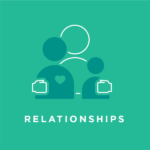
Relationships
Safe and supportive relationships can be peer-to-peer, child-to-parent, or non-parent-adult-to-child. It is shown that children who are also supported by adults who are not their parents are positively impacted.
We can promote relationships by:
- Being a supportive relationship! Take the time to connect with the children around you.
- Sharing information about after-school activities where children can connect with coaches, mentors, or peers.
- Playing and connecting with children regularly! Be silly, move your bodies together, read a book, watch a movie.
- Asking about other positive adults in the child’s life. They can be coaches, teachers, pastors, and mentors.
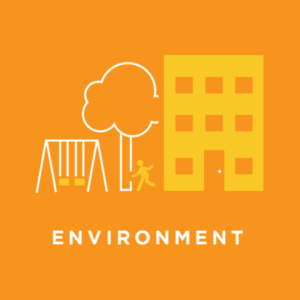 Environment
Environment
Environments are safe places where children can live, learn and play. This Building Block extends to all areas of a child’s life, home, school, playgrounds, and neighborhoods. By being in spaces that make them feel physically and emotionally safe, children are free to be who they are and grow into healthy adults.
We can promote environments by:
- Supporting a community environment where children can play and interact safely and equitably.
- Listening to children when they talk about school. Do they feel safe there? Are they treated well by their peers or school staff? If not, children, families, and schools can work together on solutions.
- Starting a program providing food on the weekends and over breaks, if your school does not provide one.
- Helping children find safe places to play outside. Is there a backyard, local park, and recess time where they can play with siblings and friends?
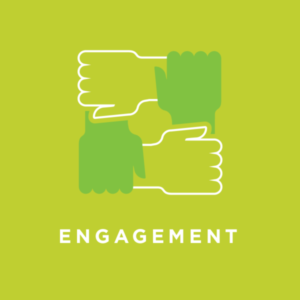 Engagement
Engagement
Engagement creates or finds spaces where children and youth can be a part of something that is bigger than themselves. This can happen in the classroom, in the community, at home. Leadership positions are important opportunities for youth: responsibility teaches them that they are important and can make a positive impact on those around them.
We can promote engagement by:
- Working on creative projects with children and sharing their favorite activities with their friends.
- Providing fliers about Community Centers, after-school activities, and mentoring programs in your community.
- Volunteering in the community together as a family or group.
- Creating new after-school activities.
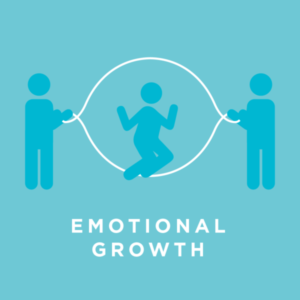 Emotional growth
Emotional growth
Emotional growth is opportunities where children and youth experience difficult events and emotions and feel supported through the experience. Children can build resilience by learning that they are not defined solely by their successes or failures. This Building Block can be practiced by being with children and youth as they experience strong emotions and supporting them through it with empathy and patience.
We can promote emotional growth by:
- Helping children to name their feelings as they talk about them and what they feel like.
- Remembering that disagreements in peer groups are normal and showing children how to disagree respectively and productively.
- Supporting school-led social and emotional learning curriculum.
- Making time for open play with friends and siblings where the children lead on their own.
Creating a difference with PCEs
Positive childhood experiences are the other half of the story when we screen for Adverse Childhood Experiences. Children, youth, and families are not only exposed to ACEs. As professionals working in child- and family-serving fields, we ask them what is going well and allow them to find space for all parts of their lives. For example, we can ask more questions centered around the Four Building Blocks of HOPE during a screening. These PCEs-focused questions can start conversations that help us celebrate the strengths of children and families and, on both sides of the screening, recognize and create access to the Building Blocks missing in their lives.
We can also practice positive childhood experiences in policy settings. Existing policies can create barriers to PCEs that block families’ access to the Four Building Blocks of HOPE. This can happen on both the organizational and governmental level. When we update and introduce new policies that prioritizes people’s access to PCEs, we can create widespread support systems and strength-based environments for professionals and the children, families, and communities they serve. Promoting PCEs at the organizational and governmental level provides even more opportunities for children and families to heal and build resilience, helping children growing into healthy adults.
Start practicing the HOPE framework
At the HOPE National Resource Center, we see a world that honors and fosters positive experiences as being fundamental to everyone’s health and well-being. To help spread the practice of positive childhood experiences, we offer resources, trainings and technical assistance, and research centered around the HOPE framework.
Resources
Introduction to HOPE
- HOPE pages
- HOPE key terms and phrases
- Four Building Blocks of HOPE fact sheet
- Four Building Blocks of HOPE interactive worksheet (English and Spanish)
Practicing the HOPE framework
Training and Technical Assistance
- Request a keynote presentation and workshop
- Complete our free online courses
- Participate in our HOPE Certification programs (individual and organizational levels)
- Join our cohort training prgoram (HOPE Innovation Network)
- Find a local HOPE trainer (U.S. and international)
Research
- Positive Childhood Experiences and Health and Opportunity Outcomes in Four U.S. States (JAMA Network Open)
- Positive childhood experiences protect adult mental health (JAMA Pediatrics)
- Improving Peer Relationships Through Positive Deviance Practices and the HOPE (Healthy Outcomes from Positive Experiences) Framework (International Journal of Environmental Research and Public Health)
- Responding to ACEs with HOPE: Healthy Outcomes from Positive Experiences (Academic Pediatrics)
- Transforming Practice with HOPE (Maternal and Child Health Journal)
- Reimagining the Juvenile Justice System Through the Healthy Outcomes from Positive Experiences Framework (International Journal of Environmental Research and Public Health)
Contact us
Not sure how to start practicing positive childhood experiences in your work or community? Reach out to us with any questions.
